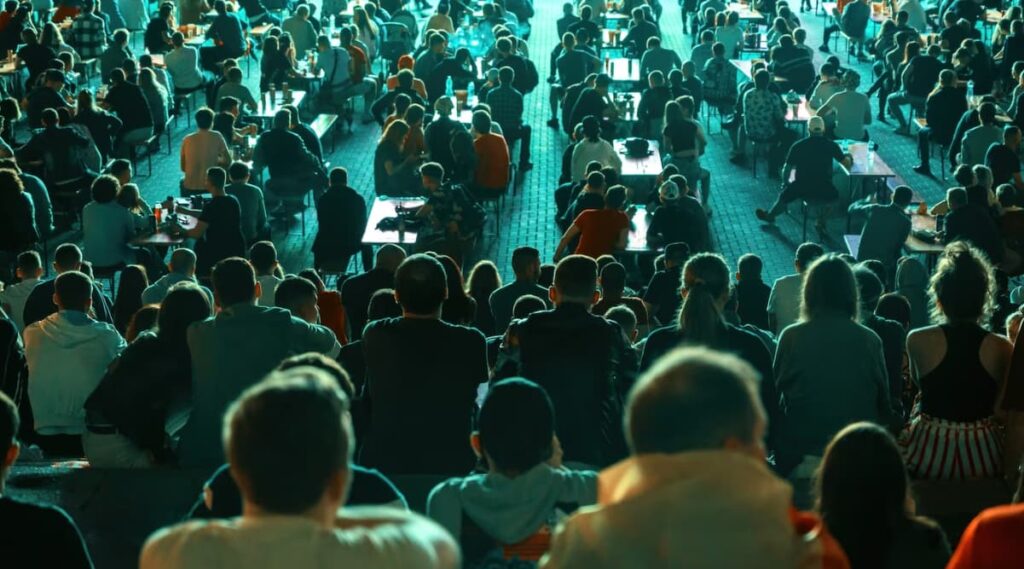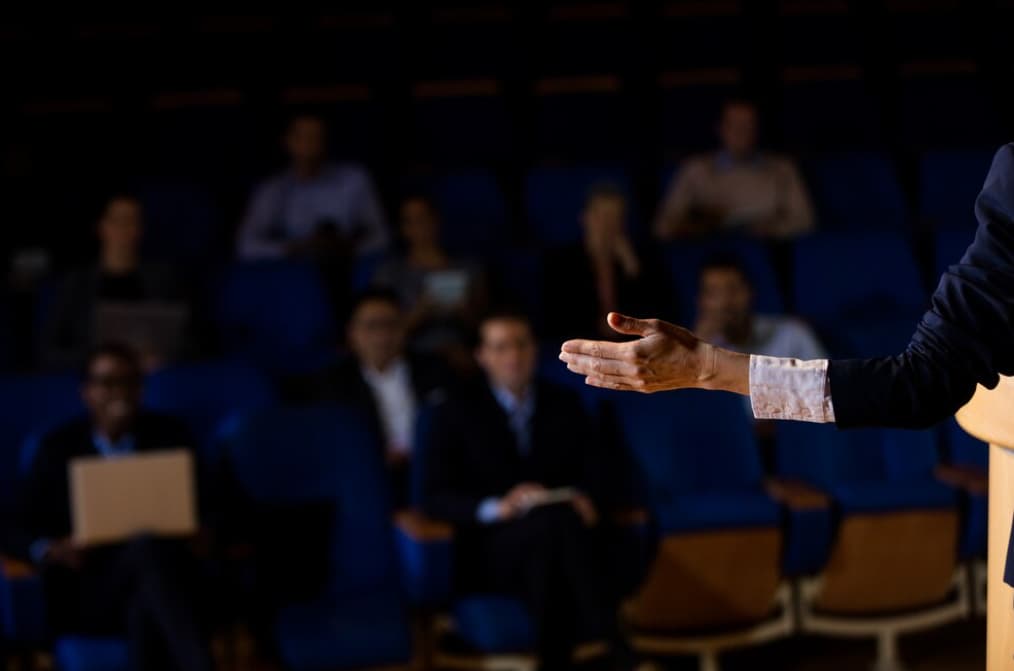Silent auctions provide an enjoyable and interactive method for fundraising. They go beyond mere fundraising, offering participants an enjoyable experience. However, planning, promoting, and running a silent auction can be a challenging endeavor, given the numerous aspects and considerations involved. This guide has been developed precisely for this purpose – to assist organizers like yourself in streamlining the process of hosting and executing successful silent auctions.
Additionally, you may also like to explore strategies for boosting the event on Facebook to maximize your reach and fundraising potential.
The Ins and Outs of Silent Auctions
While the name ‘silent auction’ suggests a quiet affair, the reality is often the opposite. These events are bustling social gatherings, filled with lively conversations among attendees.
The term ‘silent’ in a silent auction refers to the absence of an auctioneer. Participants place their bids in writing, frequently revisiting to see if they’ve been outbid as the event progresses.
Silent auctions can be standalone events or part of larger gatherings such as:
- Award ceremonies;
- Fundraising initiatives;
- Conferences;
- Galas.
Regardless of the setting, silent auctions offer a unique way for communities to engage and support various causes and objectives.
A Closer Look at Silent Auction Operations
In a silent auction, the items available for bidding are prominently displayed for attendees to peruse, often accompanied by detailed descriptions. Adjacent to each item, there is a bid sheet where participants can discreetly record their bids. Attendees utilize individual bidder numbers to maintain their anonymity. Throughout the event, guests have the option to revisit the bid sheets to raise their bids.
To encourage competitive bidding, many silent auctions incorporate a “minimum bid increase” rule, ensuring that each subsequent bid must exceed the previous one by a predetermined amount.
An essential aspect of managing a silent auction involves establishing a definite end time for bidding. Once this designated time is reached, organizers collect the bid sheets. The item is awarded to the individual with the highest recorded bid on the sheet, and they can then claim their won item.
The Advantages of Silent Auctions
- Cost-Effective Fundraising: Silent auctions offer a budget-friendly approach to fundraising. With minimal requirements such as a venue, prizes, organizers (that’s where you come in), and bidders, you can transform a simple space into a lucrative fundraising opportunity. If you already have access to a location or are renting one for an event, silent auctions can turn an empty wall into a source of revenue;
- Inclusivity for Introverts: Silent auctions cater to introverted individuals by providing a low-pressure environment where they can discreetly place bids. This inclusivity can encourage a wider range of supporters to contribute to your cause;
- Community Engagement: Organizing a silent auction involves sourcing appealing items for bidding. This task often leads to collaboration with local businesses and service providers, fostering valuable community partnerships while mobilizing your community to support your nonprofit;
- Diversified Revenue Streams: Whether you host a silent auction as a standalone event or incorporate it into a larger fundraising initiative, you create a new avenue for generating funds, enhancing the diversity of your revenue streams;
- Social Fundraising Fun: Silent auctions serve as social fundraisers where guests can engage in lively conversations about auction items, get excited about donating, and leave with something they truly cherish, provided they secure the winning bid! It’s an enjoyable and interactive way to raise funds for your nonprofit’s mission.
Different Approaches to Silent Auctions
Thanks to advancements in technology, silent auctions have evolved into various formats:
Traditional In-Person Bidding:
In this traditional silent auction setup, participants need to physically approach each displayed item and manually record their bids on bid sheets.
Virtual Online Bidding:
Virtual silent auctions allow bidders to place their bids conveniently from their homes using online platforms. These auctions often extend over several days and are not necessarily linked to a particular event.
Hybrid In-Person and Mobile Bidding:
Merging the advantages of both physical and online auctions, this mixed model permits participants to examine items directly at the venue while placing bids through their smartphones. This process can be managed using specialized applications, online platforms, or even SMS.
Mobile bidding presents numerous benefits, making it a popular option for many charitable entities:
- Ease of Use: Participants have the flexibility to bid from any location. This feature enhances social interaction at the event, allows older attendees to bid without having to move from their seats, and lets those who need to leave early continue participating remotely;
- No More Lines: This method eliminates the need for queuing up to place bids, as seen with traditional paper bid methods;
- Instant Updates: Participants are immediately notified if they’ve been outbid, encouraging swift and higher counter-bids;
- Increased Engagement: The simplicity, quickness, and convenience of mobile bidding typically boosts attendee engagement, often leading to higher proceeds for the charitable cause.
Creating a Budget for Your Silent Auction

Just like any successful event, hosting a silent auction requires careful budgeting. To construct your budget, consider the funds available for your event and factor in all anticipated expenses. These expenses are likely to encompass:
- Event Venue;
- Furniture Rentals;
- Catering;
- Music and Entertainment;
- Other Suppliers.
As you strategize and organize your silent auction, your budget will serve as a valuable reference point, ensuring that you remain financially responsible and do not exceed your allocated resources.
Additionally, your budget should include a forecast of your expected revenue. Determine how much you aim to raise and identify potential sources for generating this income. In the following section, we will explore various strategies to maximize your revenue.
Strategies for Boosting Fundraising at Your Silent Auction
Your silent auction’s main income will stem from the sale of items, but you can also adopt various strategies to boost your fundraising:
- Establish Corporate Partnerships: Create alliances with businesses that can offer financial backing, donate goods or services (like auction items or event necessities), or lend employee support. A prominent partner can elevate your event’s profile and draw more participants;
- Entry Charges: For silent auctions within larger gatherings, consider implementing entry fees. Guests will recognize that these charges help defray event costs, such as catering and entertainment, and understand that part of their ticket cost is a donation to your cause;
- Solicit Additional Contributions: As a nonprofit, it’s fitting to request extra donations during your event. This can happen during ticket sales or at various points during the event. Encourage auction winners to increase their final bid amounts as an additional donation;
- Sell Themed Merchandise: If your organization has appealing branded merchandise, set up a sales booth. This allows supporters to display their affiliation with your cause. Those who don’t win in the auction can still depart with special mementos;
- Organize a Raffle: Bring an element of thrill to your event with a raffle. Options include a 50/50 raffle, where half the proceeds go to your organization and the other half to the winner, or a prize draw for a high-value item. Make sure the prize’s worth is comparable to your auction items. Always check local laws for any necessary permits for conducting the raffle.
19 Essential Steps for a Successful Silent Auction
Launching a successful silent auction involves a comprehensive approach. Here’s a high-level list of what you need to consider when planning your event:
Before the Auction:
Form Your Team:
Identify the individuals who will assist in organizing the silent auction. Your team will likely include staff members and volunteers who can help with various tasks, such as setup, registration, checkout, and monitoring the auction.
Strategic Planning for Your Event
It’s crucial to establish a well-structured plan early in the event planning process due to the complexity and dynamic nature of organizing events. Begin by setting the event date and constructing a timeline with critical milestones and deadlines, such as:
- Booking the venue by a specific date;
- Completing the sourcing of necessary items;
- Finalizing key components of your marketing strategy.
Consider using a productivity tool to maintain organization and track these tasks effectively. Additionally, establish clear objectives for the auction and select relevant Key Performance Indicators (KPIs) to gauge its success. Your goals might include:
- Achieving a targeted revenue amount;
- Attracting a specific number of attendees;
- Raising a set amount through donations.
Venue Selection
Select a venue that accommodates the needs of your event, ensuring it’s spacious, aligns with your theme, and is accessible. If you plan to use mobile bidding, check for free Wi-Fi availability at the venue.
Explore options for venue sponsorship before opting for rental. Engage local businesses for potential venue donations. For instance, partnering with a local restaurant could save costs and offer them promotional benefits.
Acquiring Attractive Auction Items
The attractiveness of an auction is greatly influenced by the desirability of its offerings. Choose items that connect with your audience and have high revenue potential. Identify the characteristics of your audience – be they budding professionals, people enjoying retirement, lovers of luxury, art enthusiasts, sports devotees, wine experts, or environmental advocates – and customize your selection of items to suit their interests.
For instance, a sports organization might opt for items such as signed memorabilia, match tickets, and athletic equipment. Commonly appealing items include dining vouchers, curated wine collections, holiday packages, hotel accommodations, and tickets to exclusive happenings (elite sports matches, high-demand concerts, or one-of-a-kind cultural events).
To align closely with what your audience desires, think about carrying out a survey before the event to understand their preferences in various price brackets. This forward-thinking strategy requires extra organization but tends to yield excellent results.
Effective sourcing of items is largely dependent on your network. Involve your community, encompassing relatives, friends, alumni, and corporate contacts, to contribute. Assemble a group to brainstorm potential donors and items, assigning volunteers specific tasks for outreach and collection.
Advanced Promotion and Marketing Strategies for Your Silent Auction
Kickstart the publicity for your silent auction as soon as you finalize the date. Begin by distributing invitations and rallying your community’s support. Utilize various platforms for promotion, including your website, local print media, and social media channels.
Consider launching an online catalog showcasing the auction items. This catalog can be a work in progress, allowing you to add new items as they are secured. This strategy not only generates excitement but also informs potential attendees about what will be available for bidding, encouraging them to register and plan their bidding strategy.
Crafting Detailed Item Description Sheets
For each auction item, prepare a comprehensive description sheet. This should include detailed information about the item, acknowledgment of its sponsor, and a photograph, particularly important for intangible items.
Disseminate these description sheets at your event in various ways. For instance, compile them into booklets and distribute them at key locations like dinner tables, bar counters, and social areas. This keeps guests informed about the auction items and motivates them to participate in the bidding process.
Designing Effective Bid Sheets
Bid sheets are the core of the auction process. Ensure each sheet lists the item’s name, its estimated value, and a starting bid amount. Include spaces for participants to write their bidder number and bid amount.
You might also offer a “Buy Now” option. This allows attendees to immediately purchase an item at a set price, which is generally higher than the starting bid. This feature not only secures immediate sales but can also drive up revenue.
Implementing Silent Auction Software (Optional)
If you plan to incorporate mobile bidding in your silent auction, consider using specialized software. This technology facilitates a seamless bidding process, enhancing the overall efficiency and participant experience of your event.
Event Day: Final Preparations and Execution of Your Silent Auction
Here’s an essential guide for the day of your event, focusing on setting up the auction and addressing last-minute details.
Arranging Auction Items
To display your auction items effectively, consider the following:
- Ensure each item is clearly visible and well-lit;
- Use platforms, easels, and cases to highlight individual items;
- Group similar items together for easy browsing;
- Provide sufficient space for guests to move around, mingle, and comfortably place their bids.
Establishing a Registration Process
Setting up a registration system offers two key advantages:
- Anonymity in bidding: Assign bidder numbers to participants upon registration, allowing them to place bids without revealing their identity;
- Collection of participant information: This is crucial for post-event communication, particularly for contacting winning bidders and issuing receipts. While bid sheets can include a section for contact details, a private registration ensures more comfort for participants in sharing their information.
Creating a Checkout Area
Designate a specific area for handling transactions. This setup should cater to privacy needs and security, and be equipped to process payments in cash, check, or credit card (via a nonprofit credit card processor).
Welcoming Attendees
Have your team or volunteers greet guests upon arrival, gauging the room’s atmosphere and sparking enthusiasm for the auction. If you’re using silent auction software or mobile bidding, provide a brief tutorial on how it operates.
Inaugurating the Bidding Process
Announce the start of the bidding, marking the beginning of the exciting fundraising activity.
Managing Concurrent Events
If your event includes a dinner, awards ceremony, or other activities, ensure these run smoothly alongside the auction. Continuously remind guests about the ongoing auction and its closing time to maintain engagement.
Engage with Your Guests
Make sure your guests are familiar with the bidding process and address any inquiries they might have about your items to maintain a high level of excitement throughout the event.
Finalize the Auction
Enhance the auction’s excitement by implementing a countdown timer before its closure. This tactic will encourage participants to submit last-minute bids while they still have the opportunity.
Announce the Winning Bids
Allow the winners to revel in their victories and assist them in obtaining their items. Ensure that you reach out to winners who have departed the event to arrange item pickup or delivery.
Post-Auction Reflection and Improvement
Gather Participant Insights
Express gratitude to your attendees by sending a follow-up survey after the event. Encourage them to provide their feedback and suggest improvements for your next silent auction.
Conduct a Reflective Team Meeting
Organize a meeting with your team to evaluate the silent auction’s performance. Solicit feedback from your staff and volunteers about their experiences and identify areas for enhancement.
Review the objectives and key performance indicators (KPIs) established at the start of the planning process. Assess whether these targets were met and analyze the reasons for success or shortfall. Discuss strategies for better outcomes in future events.
Implementing Online Donation Capabilities on Your Website

Incorporating online donations is becoming a staple for contemporary nonprofits, complementing traditional methods like silent auctions. By engaging visitors on their websites and facilitating easy online contributions, nonprofits can enhance their fundraising efforts.
To enable online donations on your site, you might want to explore using Membership Management Software. This comprehensive tool is designed to streamline various administrative tasks for smaller organizations, including processing donations, managing memberships, and handling event registrations, all while fostering growth in membership and online revenue.
Here’s how Membership Management Software can revolutionize your website’s donation process:
- When a visitor decides to donate via your website, the software effortlessly sets up a dedicated donation page;
- The donation is directly transferred to your account, while the donor’s details are recorded in a database;
- The software automatically issues a donation receipt to the donor and updates your financial records;
- With the donor’s contact information in your system, you can easily communicate further about your organization and encourage future donations, all directly through the software.
Conclusion
Silent auctions, when strategically executed, can be a monumental boon to nonprofits, enabling them to raise funds while offering an entertaining platform for donors. The key to their success lies in meticulous planning, diversified auction items, efficient team coordination, and the leverage of technology. Additionally, silent auctions provide an opportunity to reach a wider audience and establish strong relationships with donors, which can significantly enhance their long-term commitment. Therefore, adopting the necessary strategies and tactics to run a successful silent auction can be an invaluable investment of time and effort, resulting in considerable benefits for the organization.
